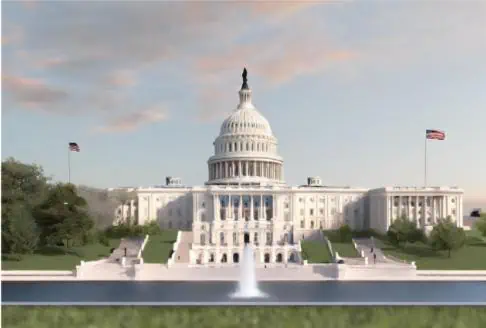Introduction
With the arrival of the new fiscal year on October 1, 2023, the United States once again finds itself on the brink of a potential government shutdown, a recurring political spectacle in Washington, D.C. In this article, we will delve into the intricacies of the U.S. fiscal year, explore the disruptive consequences of a government shutdown, and examine the crucial avenues available to avoid this scenario.
Understanding the Fiscal Year and Appropriations
The fiscal year in the United States operates on a calendar that begins on October 1st and concludes on September 30th of the following year. During this period, the federal government must secure funding to support its myriad operations, programs, and agencies. This funding is allocated through a series of appropriations bills, which typically number 12 and encompass various facets of government spending, such as defense, education, healthcare, and more.
The Shadow of a Government Shutdown
The countdown to a potential government shutdown commences when Congress fails to pass either the necessary appropriations bills or a temporary funding measure called a continuing resolution (CR) before the September 30th deadline. The absence of these essential financial lifelines casts uncertainty over the nation.
The Far-reaching Consequences
A government shutdown is not merely a political showdown; its repercussions extend widely and can be immediate. Here are some of the significant consequences:
Disruption of Government Services: Government services and programs grind to a halt during a shutdown. Federal agencies cease their operations, and federal employees face furloughs or are compelled to work without compensation. Critical functions, including immigration processing, tax collection, and food safety inspections, are severely affected.
National Parks and Institutions: High-profile casualties of a government shutdown include the closure of national parks and museums. These attractions, which draw tourists from across the globe, are often inaccessible during a shutdown, leading to economic losses for local communities and dashed expectations for visitors.
Economic Ramifications: The economic consequences of a shutdown can be substantial. It disrupts business activities dependent on government contracts, delays tax refunds, and impacts consumer confidence, potentially triggering an economic slowdown.
Navigating the Shutdown Tightrope
As the September 30th deadline approaches, lawmakers face two primary avenues to avert a government shutdown:
Passing Appropriations Bills: The ideal approach to fund the government involves successfully passing all 12 appropriations bills through both chambers of Congress, securing the President’s signature. Each of these bills addresses specific areas of government spending, facilitating targeted funding decisions.
Continuing Resolution (CR): When budgetary impasses arise or when there’s insufficient time to pass all appropriations bills, Congress can opt for a continuing resolution. This temporary measure maintains government funding at existing levels for a limited duration, affording legislators additional time to negotiate a comprehensive budget.
Conclusion
As the annual government shutdown drama unfolds, the United States faces the challenge of navigating the fiscal year tightrope. The consequences of a government shutdown extend broadly, affecting millions of Americans and the nation’s economy. It falls upon lawmakers to seek common ground and ensure the seamless functioning of the federal government. Whether through appropriations bills or a continuing resolution, the choices they make will determine whether the nation can avoid the disruptions and uncertainties that accompany a government shutdown. In the days leading up to September 30th, all eyes will be on Washington, D.C., as the fate of the fiscal year hangs in the balance.
